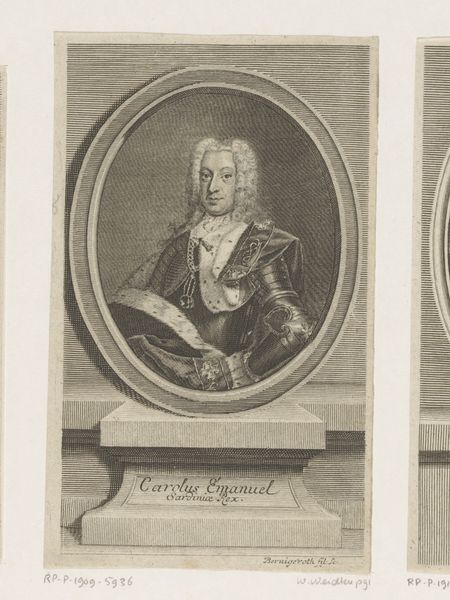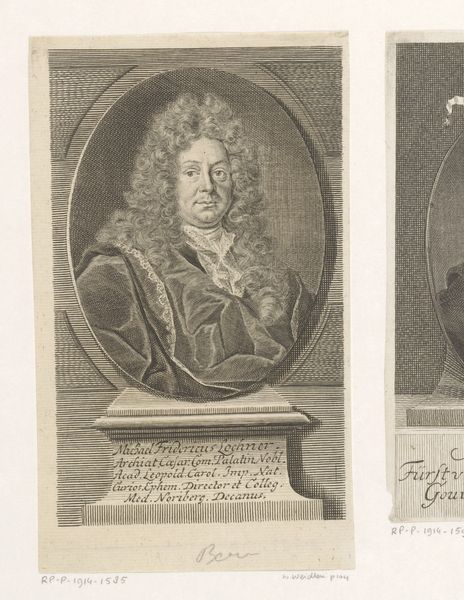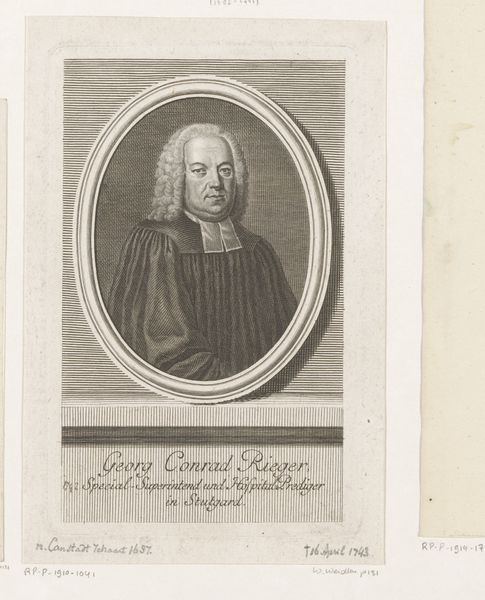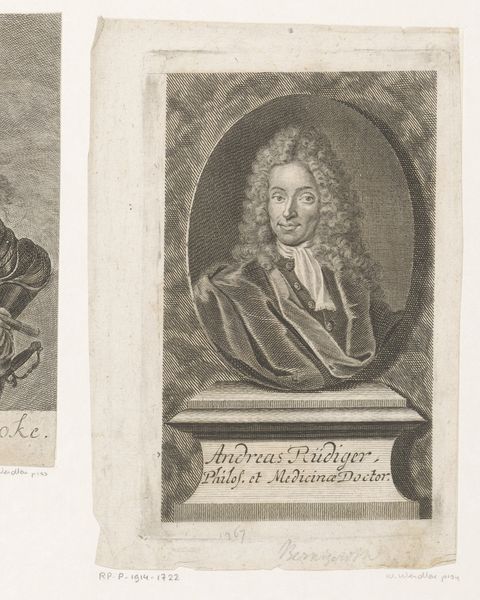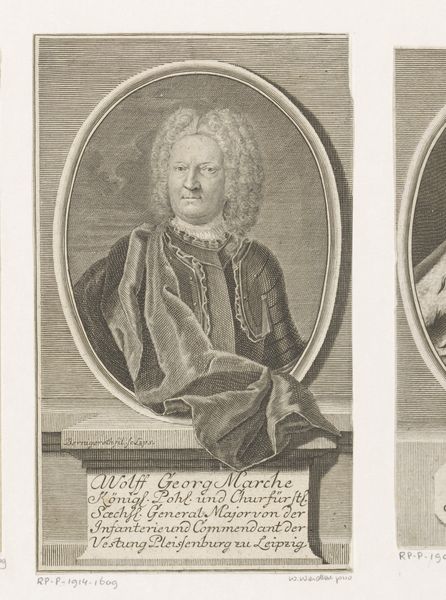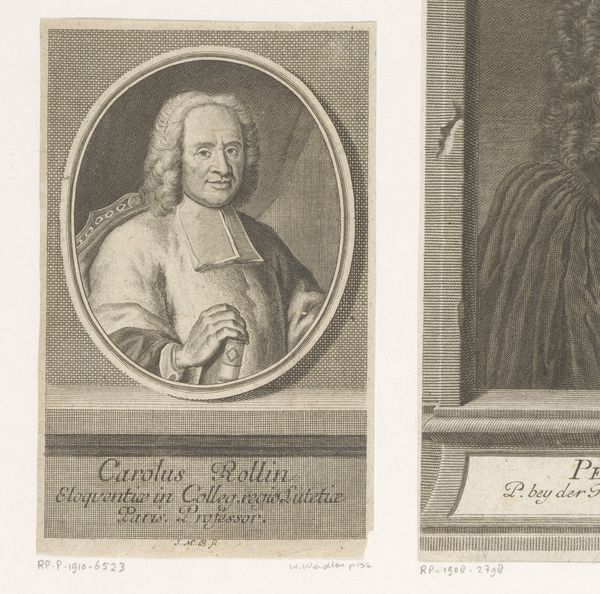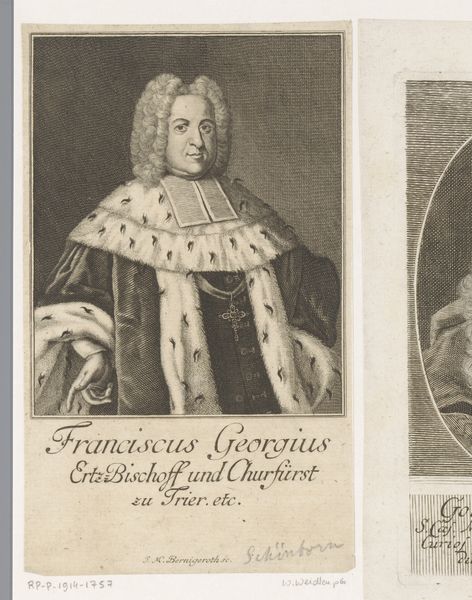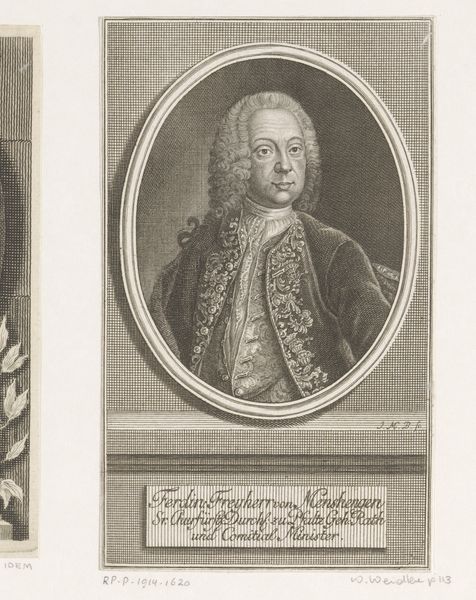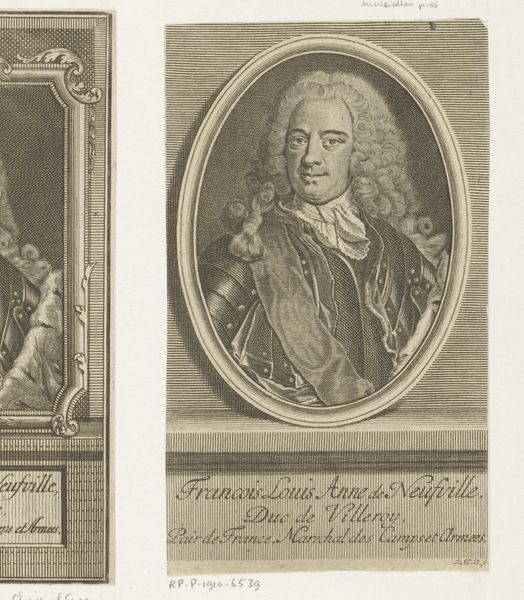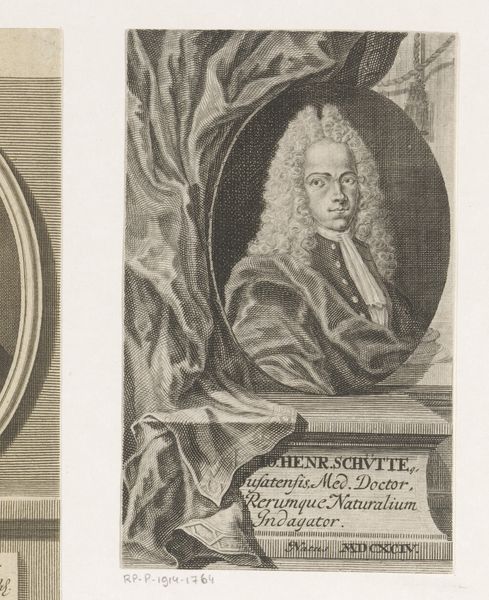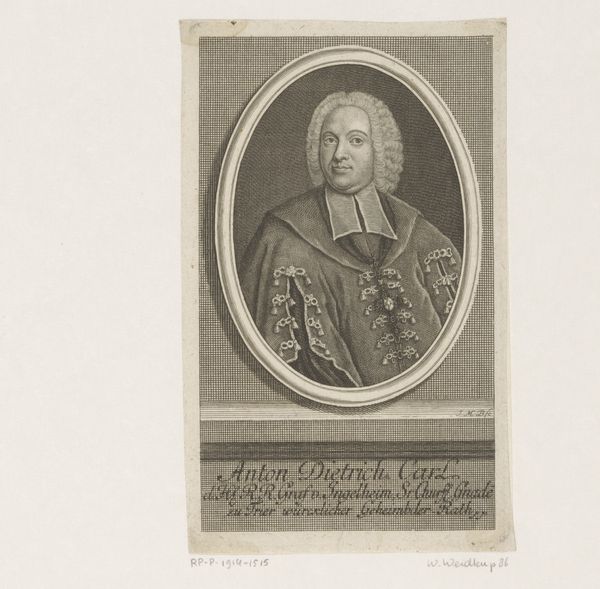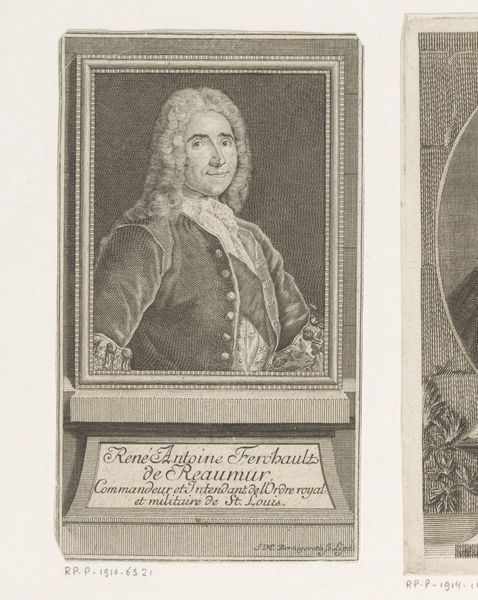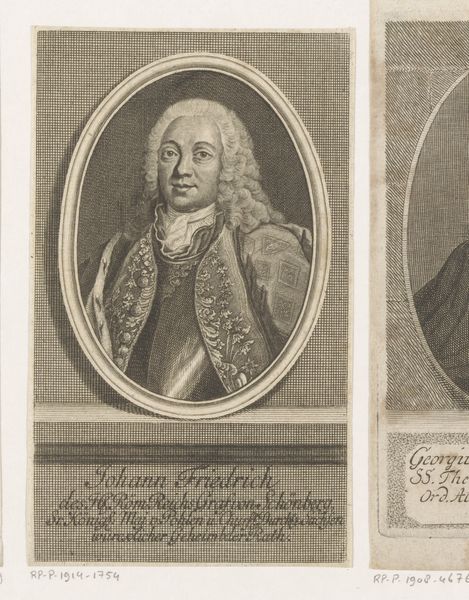
print, engraving
#
portrait
#
baroque
# print
#
old engraving style
#
history-painting
#
engraving
Dimensions: height 156 mm, width 89 mm
Copyright: Rijks Museum: Open Domain
Editor: Here we have Johann Martin Bernigeroth's 1742 engraving, "Portret van Karl Friedrich von Württemberg-Oels," at the Rijksmuseum. It's so formal, yet something about the slightly smug expression of the subject almost feels like a wink to the viewer, don't you think? How would you interpret this work, considering its historical context? Curator: "Smug," you say? I like that! Perhaps more like quietly assured, a confidence born from privilege, don't you think? It's Baroque portraiture at its most official. Bernigeroth, while not a household name, captures the spirit of the era perfectly – the emphasis on status, power, the wig that screams "I am important!". Look at the detail of the engraving – see how light and shadow is crafted. But consider, this wasn't a photograph, right? What aspects would you consider in it's interpretation? Editor: Good point! Maybe the slight smirk is my 21st-century projection. Is the accuracy compromised due to this being created for reproduction? Does the artist have to play up certain details, or symbols, at the expense of nuance? Curator: Precisely! Engravings like this one spread the image of the Duke far and wide, solidifying his authority. It’s a calculated performance, even in ‘static’ portraiture. It reminds us images are never neutral. Also, given that there may have been numerous copies of the work, how did its influence shift as its ubiquity increased? It could change the initial interpretation. Editor: That really reframes how I see it! From a single, fixed representation to a piece of propaganda, in a way. Curator: Propaganda is too loaded, perhaps, but a conscious act of image management, definitely. It also has this wonderfully subversive, silly undertone that is brought out in your "smug" interpretation. It shows a very human likeness of power which contrasts to that formal construction, that makes you wonder. Editor: This conversation made me appreciate engravings, portraits, and history from a fresh vantage point!
Comments
No comments
Be the first to comment and join the conversation on the ultimate creative platform.
